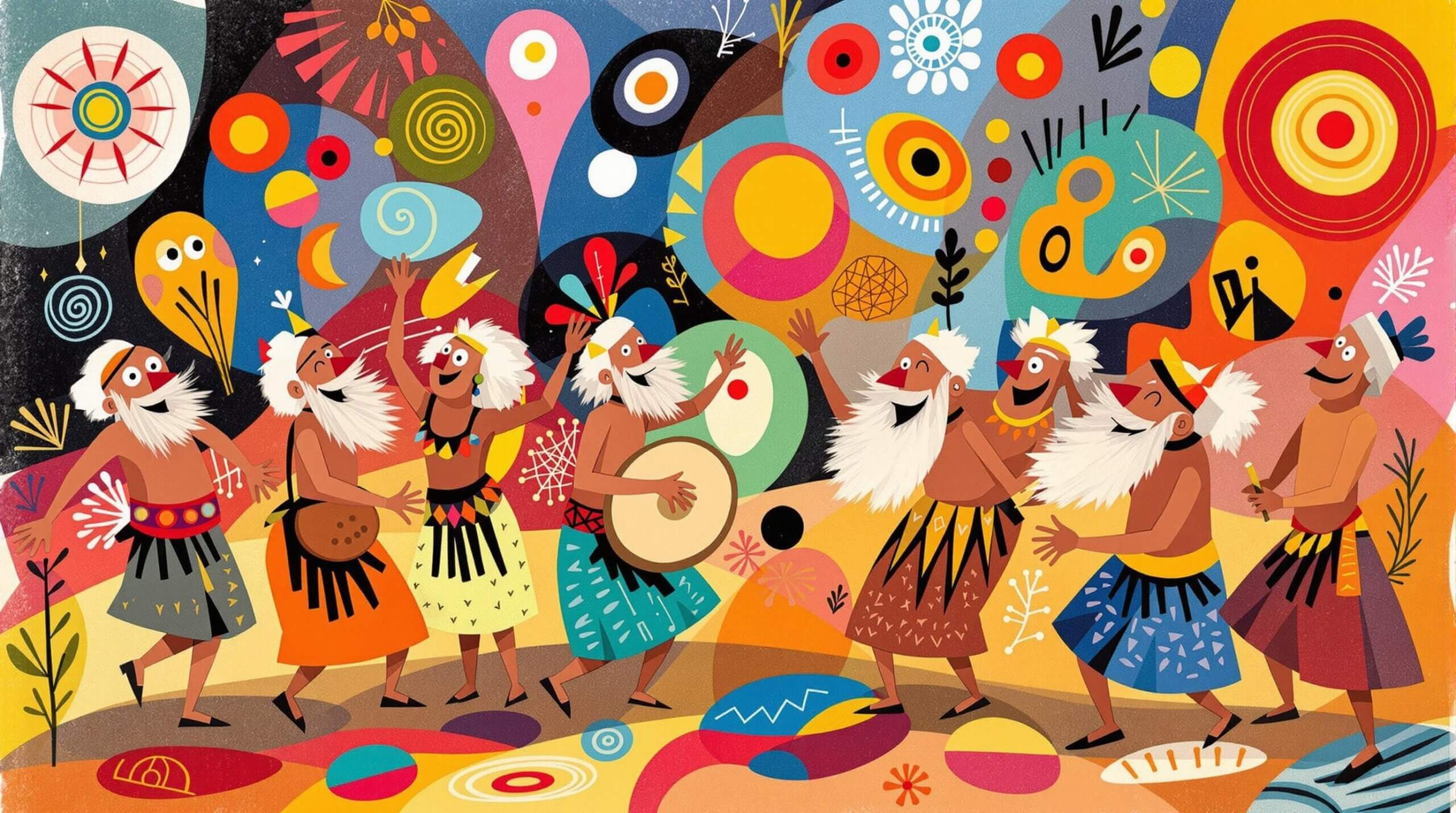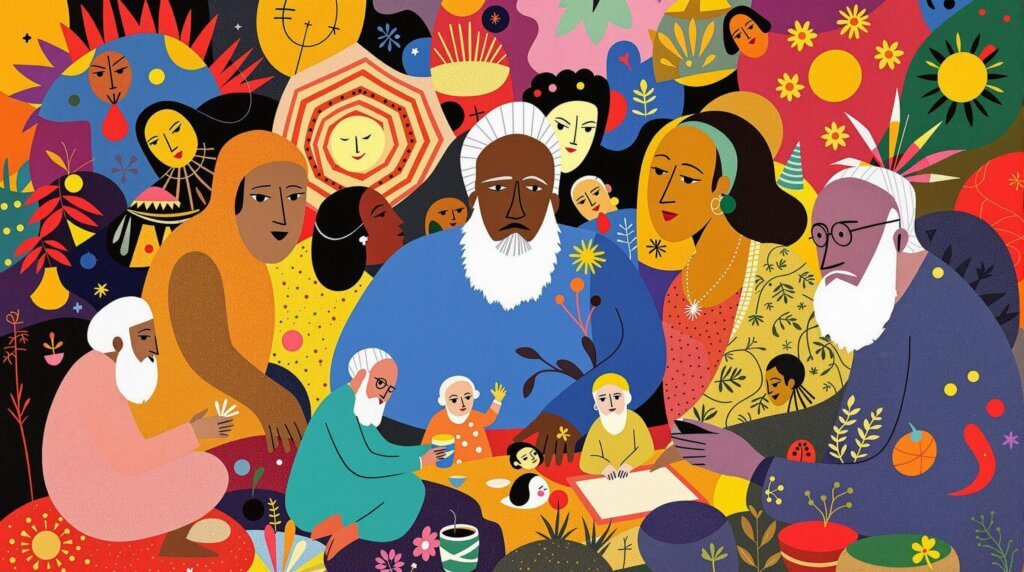Understanding Indigenous Longevity: Ancestral Wisdom for Modern Times
The Remarkable Health of Traditional Societies
While we chase the latest health trends and supplements, several indigenous communities quietly live into their 90s and beyond, largely free from modern diseases. These populations – from the Okinawans of Japan to the Hunza of Pakistan – have fascinated researchers for decades. Their lifestyles offer valuable lessons about aging well, minus the expensive gadgets and complicated protocols.
Key Features of Long-Living Indigenous Groups
These communities share striking similarities in their daily habits. Natural movement, strong social bonds, and simple, unprocessed food form the backbone of their lifestyle. They don’t hit the gym or count calories – their longevity stems from cultural practices passed down through generations.
The Science Behind Traditional Practices
Modern research confirms what these communities have known for centuries. Their traditional diets are rich in antioxidants and anti-inflammatory compounds. Their daily physical activities maintain muscle mass and cardiovascular health. Perhaps most importantly, their strong social connections reduce stress and promote mental well-being – factors now known to significantly impact longevity.
Notable Long-Living Communities
The Nicoyans of Costa Rica regularly live past 90, often working into their 80s. The Sardinians of Italy maintain active social lives well into their late years. The Ikarians of Greece show remarkably low rates of dementia. Each community offers unique insights into healthy aging, backed by decades of scientific observation.

Key Lifestyle Patterns of Indigenous Communities
Natural Movement Patterns
These populations stay active without formal exercise. They walk on uneven terrain, carry water, tend gardens, and maintain consistent low-intensity movement throughout the day. This natural activity pattern proves more beneficial than our modern habit of sitting for hours followed by intense gym sessions.
Dietary Wisdom
Indigenous diets typically feature whole, seasonal foods. They eat moderate portions, with plenty of vegetables and limited meat. Many practice natural forms of intermittent fasting – not as a weight loss strategy, but as part of their cultural or religious traditions. These eating patterns align perfectly with recent research on longevity-promoting diets.
Social Connection and Community
In these societies, isolation is rare. Multiple generations live together, share meals, and support each other daily. This constant social interaction provides emotional support and practical assistance, creating a buffer against stress-related aging.
Modern Applications of Indigenous Wisdom
Practical Movement Strategies
Research shows that mimicking indigenous movement patterns can improve health markers. Simple changes like walking more, gardening, or doing household tasks manually can add natural movement to our days. Studies indicate that such activities can reduce mortality risk by up to 30%.
Adapting Traditional Diets
While we can’t exactly replicate indigenous diets, we can adopt their principles. Eating whole foods, reducing portion sizes, and implementing periodic fasting can provide similar benefits. Research indicates that these dietary patterns can reduce inflammation and improve cellular repair mechanisms.
Building Modern Communities
Creating strong social networks requires effort in our disconnected world. Regular family meals, community activities, and maintaining close friendships become crucial health investments. Studies show that strong social ties can increase lifespan by up to 50%.
Specific Lessons from Different Indigenous Groups
The Okinawan Model
Okinawans demonstrate the power of purpose. Their concept of “ikigai” – a reason for being – keeps them active and engaged. They eat a plant-rich diet, maintain strong social bonds, and stay physically active through gardening and traditional dance. Their diet is particularly notable for its high sweet potato content and moderate calorie intake.
Hunza Valley Practices
The Hunza people of Northern Pakistan are known for their remarkable vitality. Their diet includes abundant fresh fruits and vegetables, particularly apricots. They practice natural fasting during winter months when food is scarce, inadvertently activating longevity pathways. Their lifestyle involves constant movement due to farming on mountainous terraces.
Nicoya Peninsula Wisdom
Costa Rica’s Nicoya region boasts an unusually high number of healthy centenarians. Their secret lies in strong family bonds, purpose-driven living, and a diet rich in beans, corn, and tropical fruits. They maintain regular sleep patterns aligned with natural light, contributing to their longevity.
Practical Integration Tips for Modern Life
- Walk whenever possible, especially on natural surfaces
- Grow some of your own food, even if just herbs on a windowsill
- Eat meals with family or friends regularly
- Include more plant-based foods in your diet
- Practice natural fasting by extending overnight fasting periods
- Maintain regular sleep patterns aligned with daylight
- Engage in community activities or volunteer work
- Create daily routines that incorporate natural movement
- Spend time in nature regularly
- Focus on finding and maintaining your sense of purpose
Scientific Support for Indigenous Practices
Modern research validates many traditional practices. Studies show that natural movement patterns improve cardiovascular health more effectively than periodic intense exercise. Research on the Mediterranean diet, similar to many indigenous diets, demonstrates reduced rates of chronic disease. Social connection studies reveal lower cortisol levels and better immune function in people with strong community ties.
The evidence supporting indigenous wisdom continues to grow. Regular physical activity reduces all-cause mortality by 30-40%. Plant-based diets lower inflammation markers by up to 29%. Strong social connections decrease mortality risk by 50%. These findings confirm what indigenous communities have practiced for generations.
Challenges and Solutions in Modern Implementation
Overcoming Modern Obstacles
Our current lifestyle makes it challenging to adopt traditional practices fully. Long work hours, urban living, and technology dependence create barriers. However, small, consistent changes can make a significant difference. Starting with one aspect – like daily walking or regular family meals – can create a foundation for broader changes.
Creating Sustainable Changes
Success lies in adapting indigenous wisdom to modern circumstances. This might mean joining a community garden, organizing regular social meals, or finding ways to move naturally throughout the day. The key is making these practices fit your current life while maintaining their essential benefits.
Future Perspectives on Indigenous Wisdom
Emerging Research
Scientists continue studying indigenous communities, uncovering new insights about longevity. Recent findings focus on the gut microbiome’s role in healthy aging, influenced by traditional diets and lifestyle patterns. This research helps validate ancient practices while providing new ways to understand their benefits.
Preserving Traditional Knowledge
As modernization reaches these communities, preserving their wisdom becomes crucial. Researchers and anthropologists work to document their practices, ensuring this valuable knowledge isn’t lost. Their insights might help solve modern health challenges and guide future longevity research.
Indigenous communities offer profound lessons about living longer, healthier lives. Their time-tested practices – natural movement, whole foods, strong social bonds, and sense of purpose – create a comprehensive approach to longevity. By thoughtfully incorporating these elements into our modern lives, we can benefit from centuries of wisdom while adapting to current realities. The key isn’t to replicate their lives exactly, but to understand and apply their fundamental principles in ways that work for us today.



